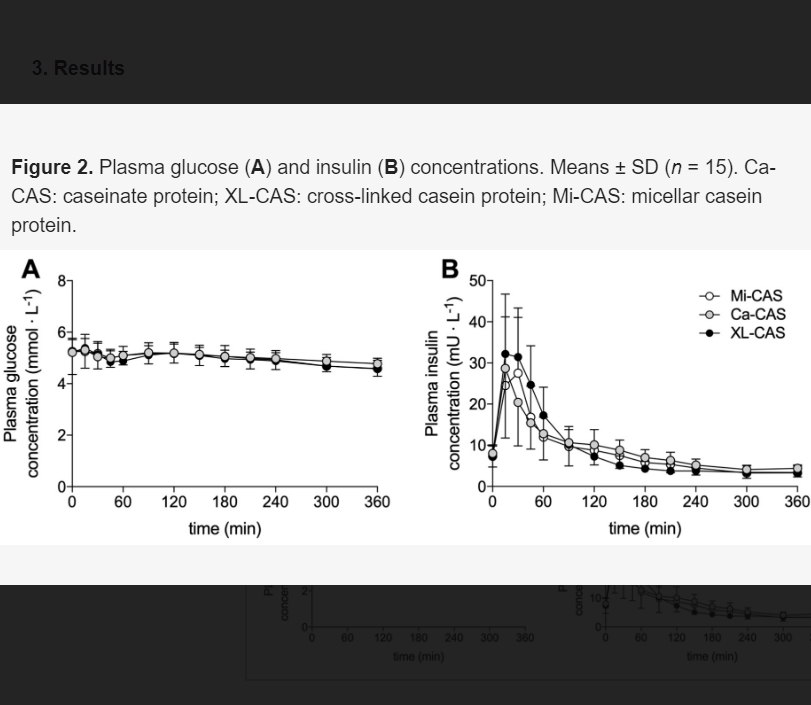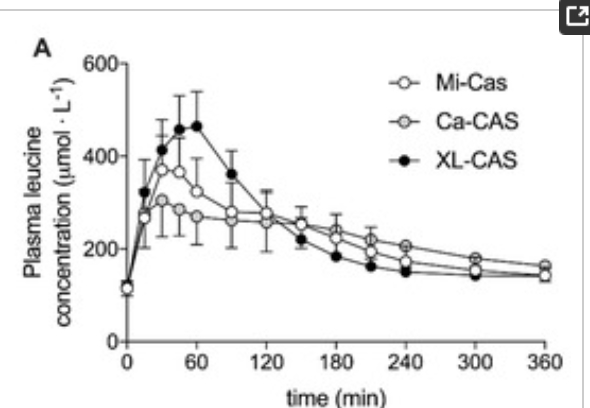Casein Protein Processing Strongly Modulates Post-Prandial Plasma Amino Acid Responses In Vivo in Humans
by Jorn Trommelen Nutrients 2020, 12(8), 2299;
Micellar casein is characterized as a slowly digestible protein source, and its structure can be modulated by various food processing techniques to modify its functional properties. However, little is known about the impact of such modifications on casein protein digestion and amino acid absorption kinetics and the subsequent post-prandial plasma amino acid responses. In the present study, we determined post-prandial aminoacidemia following ingestion of isonitrogenous amounts of casein protein (40 g) provided as micellar casein (Mi-CAS), calcium caseinate (Ca-CAS), or cross-linked sodium caseinate (XL-CAS). Fifteen healthy, young men (age: 26 ± 4 years, BMI: 23 ± 1 kg·m−2) participated in this randomized cross-over study and ingested 40 g Mi-Cas, Ca-CAS, and XL-CAS protein, with a ~1 week washout between treatments. On each trial day, arterialized blood samples were collected at regular intervals during a 6 h post-prandial period to assess plasma amino acid concentrations using ultra-performance liquid chromatography.
Plasma amino acid concentrations were higher following the ingestion of XL-CAS when compared to Mi-CAS and Ca-CAS from t = 15 to 90 min (all p < 0.05). Plasma amino acid concentrations were higher following ingestion of Mi-CAS compared to Ca-CAS from t = 30 to 45 min (both p < 0.05). Plasma total amino acids iAUC were higher following the ingestion of XL-CAS when compared to Ca-CAS (294 ± 63 vs. 260 ± 75 mmol·L−1, p = 0.006), with intermediate values following Mi-CAS ingestion (270 ± 63 mmol·L−1, p > 0.05).
In conclusion, cross-linked sodium caseinate is more rapidly digested when compared to micellar casein and calcium caseinate. Protein processing can strongly modulate the post-prandial rise in plasma amino acid bioavailability in vivo in humans.
















